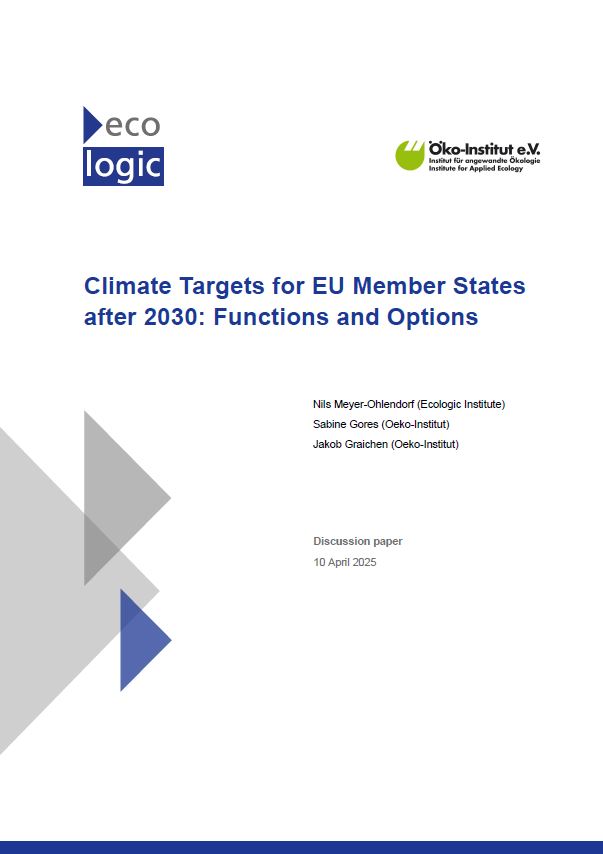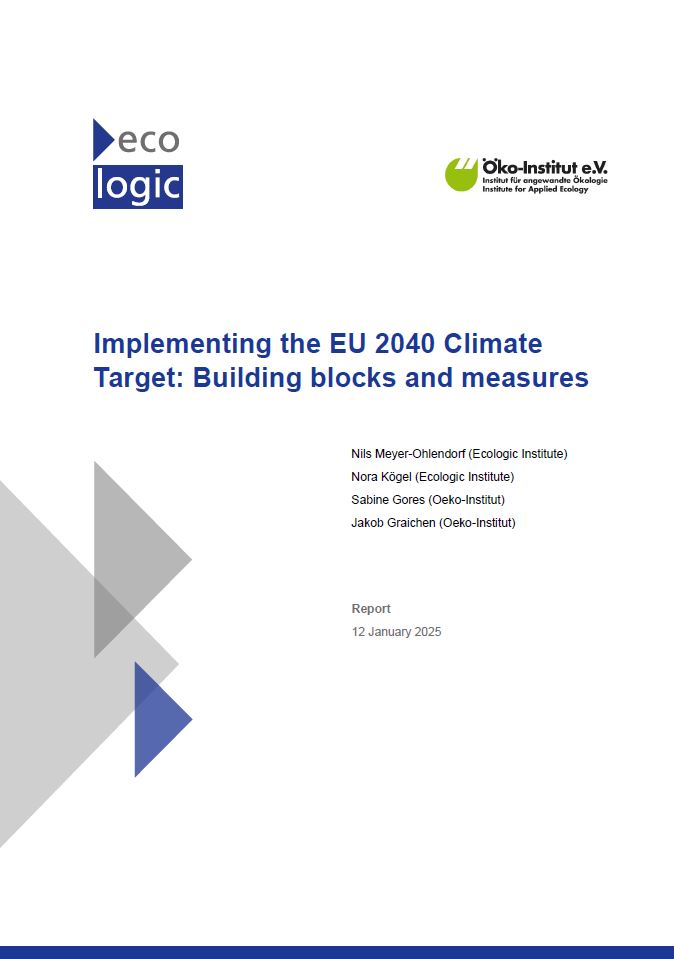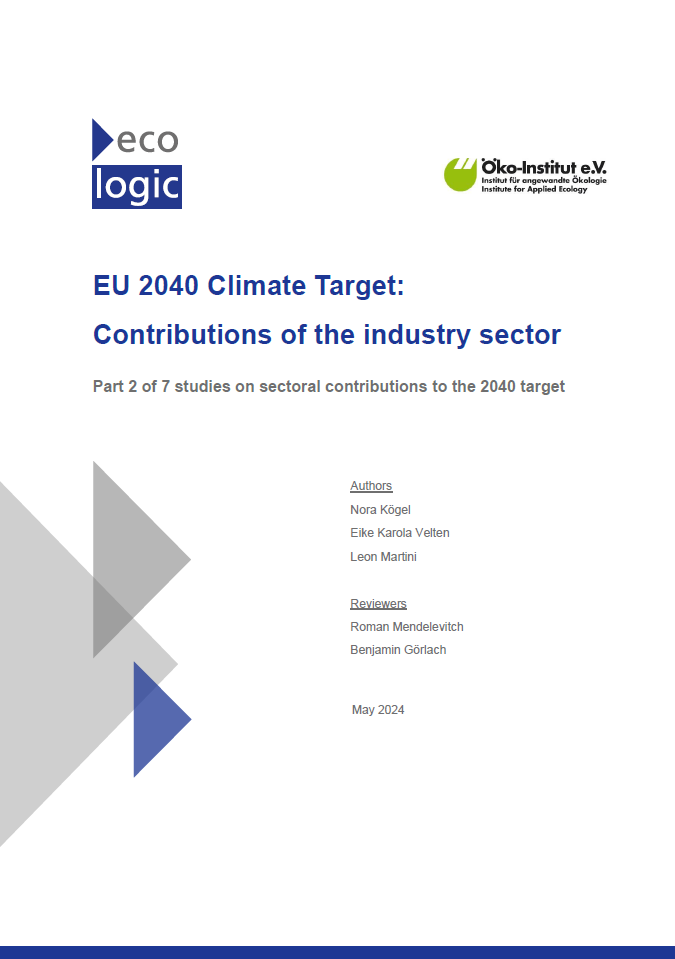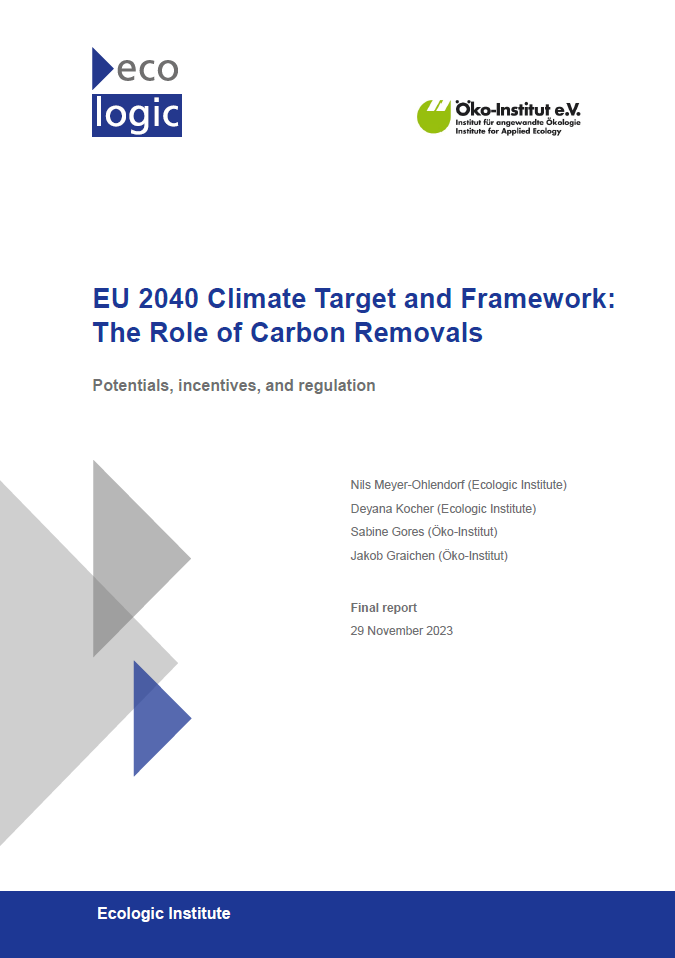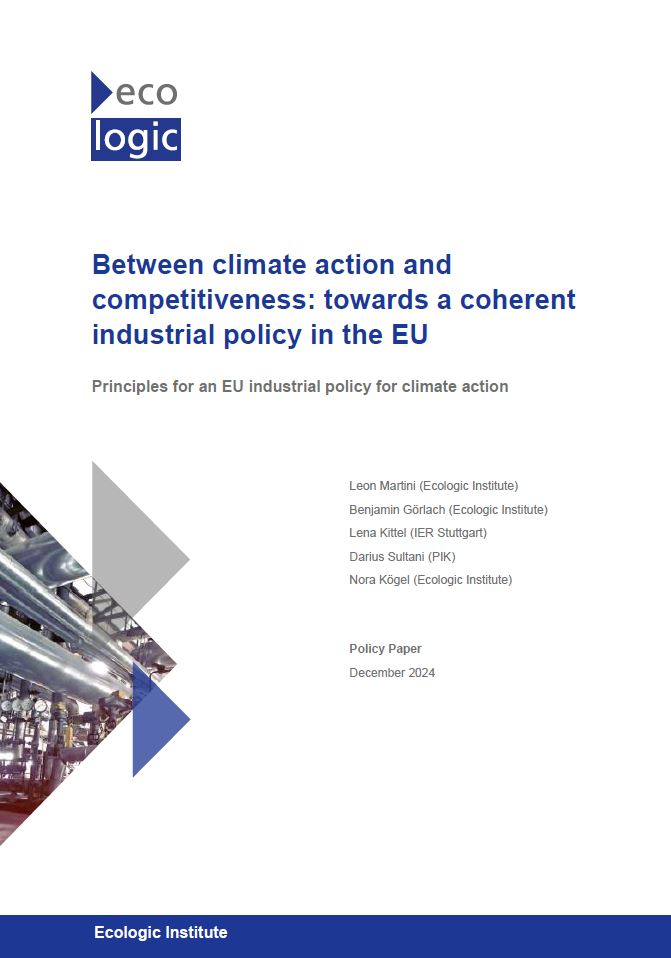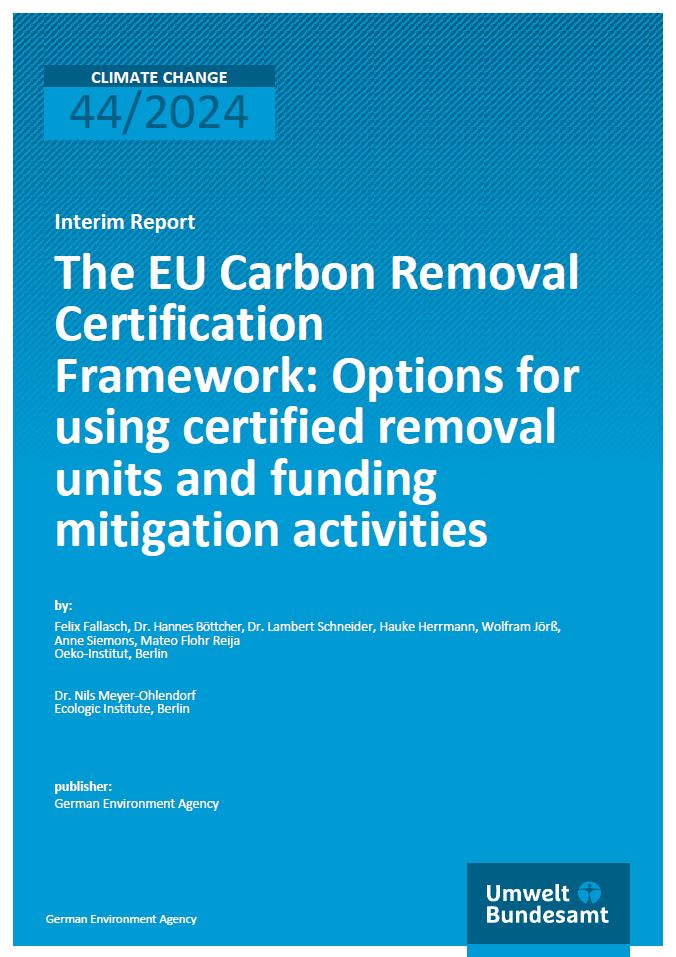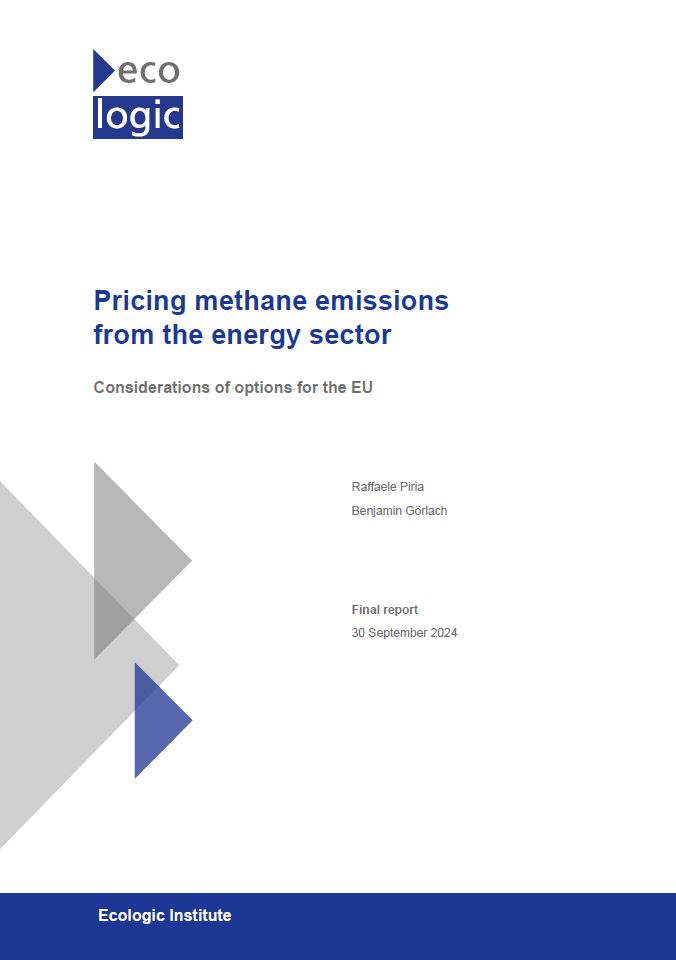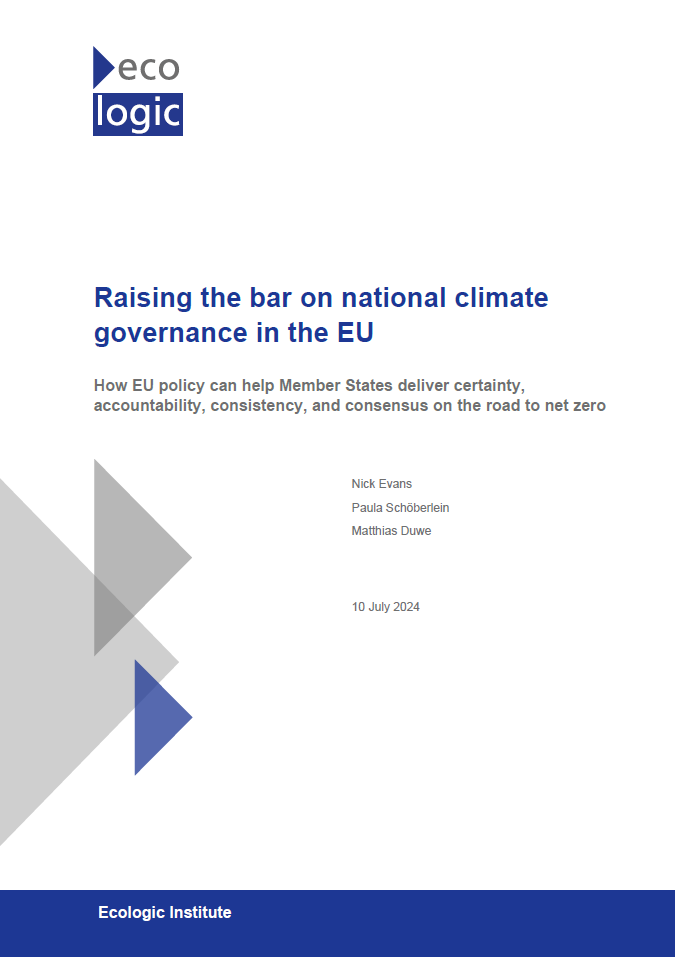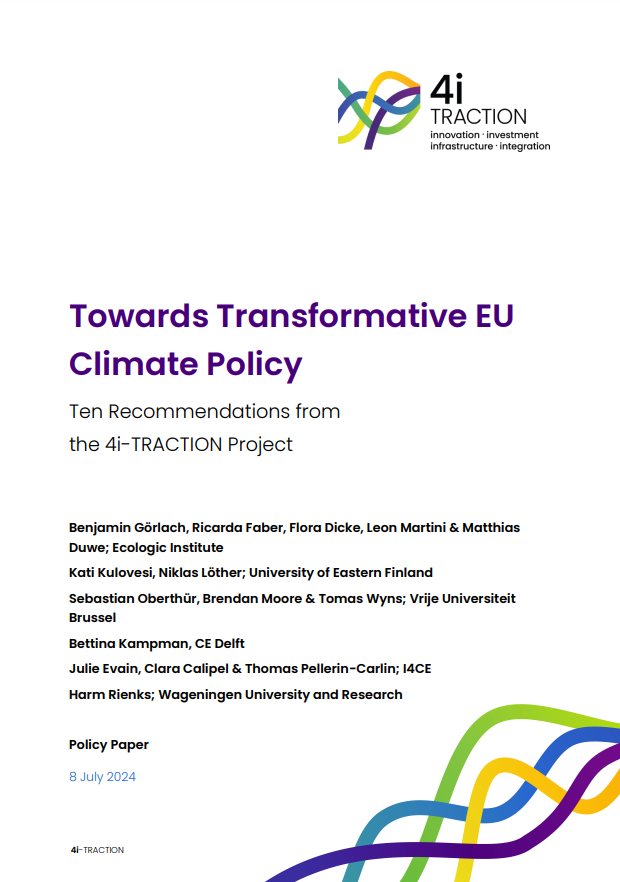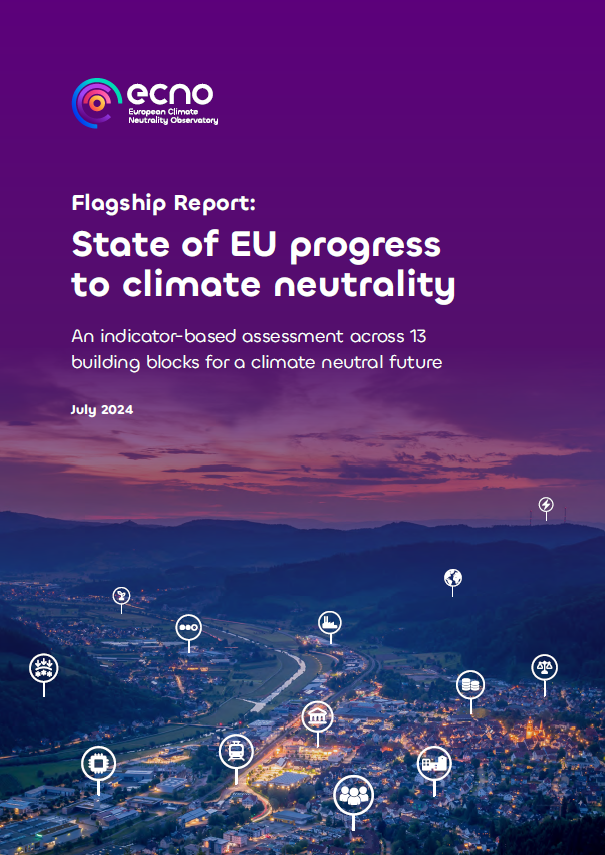Climate Targets for EU Member States after 2030
Functions and Options
- Publication
- Citation
Meyer-Ohlendorf, Nils et al. (2025): Climate Targets for EU Member States after 2030: Functions and Options. Ecologic Institute, Berlin.
Climate targets for Member States play an indispensable role in EU climate policies. They enable voters to hold national governments accountable for their climate policies. They also play a critical role in tracking Member States' progress and accelerating the adoption of climate measures. And they allow Member States to implement the climate policies that they consider best for their specific circumstances – while ensuring their collective commitment to the EU's climate goals.
A new paper by the Ecologic Institute and Oeko-Institut discusses how to design climate targets for Member States. The paper explores seven options how to best design national climate targets for the time after 2030. This paper is available for download.
Contact
- Language
-
English
- Authorship
-
Sabine Gores (Oeko-Institut)Jakob Graichen (Oeko-Institut)
- Funding
-
Federal Ministry for Economic Affairs and Climate Action (BMWK), Germany - Published by
-
Ecologic Institute, Germany Oeko-Institut (Öko-Institut e.V.), Germany - Year
- Dimension
- 17 pp.
- Project
- Project ID
- Table of contents
-
Click to show full table of contents
Executive summary
1 Introduction
2 Functions of national targets in EU climate policies
2.1 Measuring progress in emission reductions and ensuring transparency
2.2 Ensuring Member State responsibilities and accountability
2.3 Maintaining national ownership of climate policies and subsidiarity
2.4 Supporting the achievement of EU climate targets
2.5 Help ensure implement commitments under the Paris Agreement (National Determined Contribution)
2.6 Facilitating the adoption of measures in Member States
2.7 Accommodating different circumstances in Member States
3 Options: How to design national climate targets after 2030
3.1 Option 1: No national targets set by EU legislation after 2030
3.2 Option 2: Economy-wide national targets for emission reductions and removals in the ECL via an annex
3.3 Option 3: Economy-wide national targets for emission reductions and removals in the ECL via an obligation on Member States to adopt national targets in national law
3.4 Option 4: Continuation of the current CARE and LULUCF Regulation
3.5 Option 5: A reduced CARE scope, only emissions not covered by ETS 1 and 2
3.6 Option 6: National targets in national long-term strategies
3.7 Option 7: Targets for Member States in conclusions of the Council of Ministers
4 References - Keywords
-
EU climate targets, national climate targets, post-2030 climate policy, emission reduction targets, EU Member States climate responsibility, CARE Regulation, LULUCF Regulation, European Climate Law, ETS 1 and 2, carbon pricing EU, governance of climate targets, net zero EU 2050, greenhouse gas removals, national accountability climate policy, subsidiarity in EU climate action, national long-term strategies, Council climate conclusions, climate neutrality pathways, distribution of climate efforts, EU climate law architecture, European Commission, European Parliament, Council of Ministers, CARE sectors, LULUCF sectors, ETS sectors, national climate laws, EU climate governance, Gross Domestic Product per capita EU, international transport emissions, UNFCCC, Paris Agreement, EU-27, EU-2040, EU-2030European Union, EU Member States, GermanyEffort Sharing Decision evaluation, policy impact assessment, emissions benchmarking, pledge and review system, legal enforceability analysis, monitoring and reporting (MRV), national energy and climate plans (NECPs), emissions trading system compliance, GDP-based target differentiation, carbon removal accounting, scenario-based carbon pricing models, subsidiarity principle application, stakeholder consultation, target distribution formulas, regulatory impact analysis, governance regulation evaluation
Meyer-Ohlendorf, Nils et al. (2024): Implementing the EU 2040 Climate Target. Ecologic Institute, Berlin.
Martini, Leon, Benjamin Görlach, Lena Kittel, Darius Sultani and Nora Kögel (2024): Between climate action and competitiveness: towards a coherent industrial policy in the EU. Ecologic Institute, Berlin.
Fallasch, Felix et al. 2024: The EU Carbon Removal Certification Framework: Options for using certified removal units and funding mitigation activities. Interim Report. German Environment Agency: Dessau-Roßlau.
Piria ,Raffaele, Benjamin Görlach (2024): Pricing methane emissions from the energy sector: consideration of options, for the EU. Ecologic Institute, Berlin.
Evans, Nick, Paula Schöberlein, Matthias Duwe (2024). Raising the bar on national climate governance in the EU: How EU policy can help Member States deliver certainty, accountability, consensus, and consistency on the road to net zero. Ecologic Institute: Berlin.
Görlach et al. (2024): Towards Transformative EU Climate Policy – Ten Recommendations from the 4i-TRACTION Project. Ecologic Institute, Berlin.
Velten, Eike Karola et al. 2024: Flagship Report: State of EU progress to climate neutrality. An indicator-based assessment across 13 building blocks for a climate neutral future. European Climate Neutrality Observatory (ECNO).
